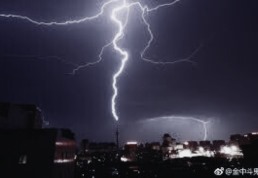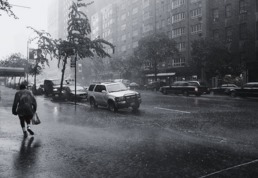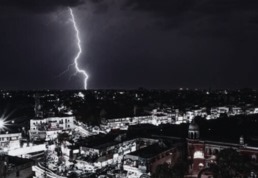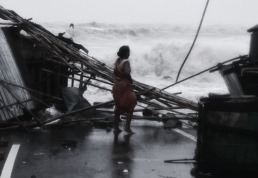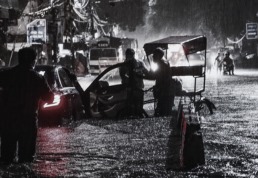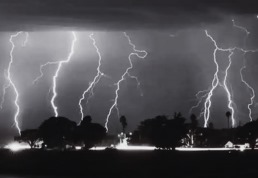Lightning Strikes in Bihar and Rainfall in Delhi
1
1. Tragic Loss of Lives in Bihar Due to Lightning Strikes
On April 10, 2025, Bihar experienced severe weather conditions, resulting in the deaths of at least 25 individuals across multiple districts due to lightning strikes and hailstorms. Nalanda district was the most affected, reporting 18 fatalities, followed by Siwan with two deaths, and one death each in Katihar, Darbhanga, Begusarai, Bhagalpur, and Jehanabad.
2. Government Response and Compensation Measures
Bihar Chief Minister Nitish Kumar expressed condolences and directed officials to provide ₹4 lakh compensation to each victim's family. He urged residents to stay indoors during adverse weather and follow advisories by the Bihar State Disaster Management Authority.
3. Rainfall Brings Respite in Delhi Amid Heatwave
On the same day, Delhi witnessed cloudy skies and light rain, providing relief from the ongoing heatwave. However, temperatures remained high, with Safdarjung recording a max of 39.6°C (4.5°C above normal) and a minimum of 25.9°C — the highest night temperature recorded in April over the last 6 months.
4. Forecast and Public Advisory for Delhi
The India Meteorological Department (IMD) forecasted similar conditions on April 11 and 12, with cloudy skies, thunderstorms, and light drizzle. Residents were advised to:
- Avoid outdoor activities during storms
- Watch for falling trees or branches
- Expect possible electricity supply interruptions
- Check for traffic congestion before traveling
5. Broader Context: Lightning-Related Fatalities in India
Lightning strikes are a leading cause of weather-related deaths in India, especially during monsoon season. The high number of casualties is linked to the large outdoor working population, making them more vulnerable.
Source: BBC News
6. Safety Recommendations
- Stay indoors during thunderstorms and avoid open fields, trees, and water bodies.
- Unplug electrical appliances and avoid wired electronics during storms.
- Follow advisories from IMD and local authorities.
- In emergencies, contact local disaster management services immediately.


